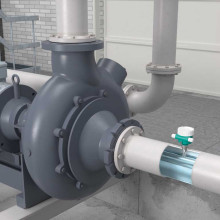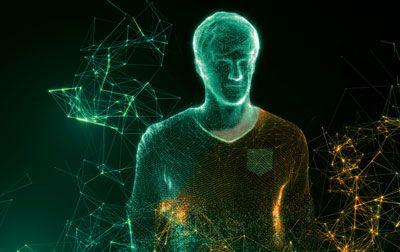 The original idea of this new development comes from the aircraft industry. There, high-resolution 3D measurement with laser scanners is used to precisely connect components, for example. Pepperl + Fuchs showed the potential of this technology for applications in the sense of Industry 4.0 and brought another dimension of measurement into play.
The original idea of this new development comes from the aircraft industry. There, high-resolution 3D measurement with laser scanners is used to precisely connect components, for example. Pepperl + Fuchs showed the potential of this technology for applications in the sense of Industry 4.0 and brought another dimension of measurement into play.
2018 founded Lufthansa Technik and Pepperl + Fuchs together in Hamburg the 3d.aero GmbH. The aim of the joint venture is to develop new automation solutions for the aircraft industry and to advance the digitization of production. Among other things, the focus is on applications for optical measuring devices. For example, multiple devices can be combined with optical time-of-flight measurement techniques to create 3D imagery of components and their mounting locations, and use this data to enable high-precision automated assembly. The same technology can be used to control paint robots or to position the passenger bridge in front of the car door. Because of the arched hull their precise approach is not a trivial task. At the same time, small collisions must be reliably prevented because of the strict safety regulations.
Connected Customization for Industry 4.0
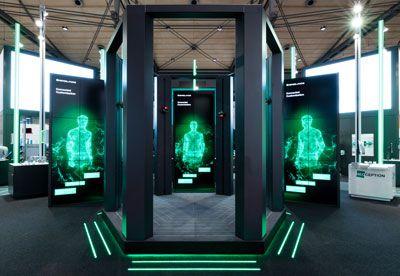 Experience with such applications gave rise to the original impetus to continue 3D recording of objects in the spirit of Industry 4.0 and to exhaustively exhaust their technical possibilities, also at the information level. The trade fair exhibit "Connected Customization" was created as a test version, in which trade fair visitors make themselves available as an "object". This is first recorded by six optical distance sensors from the R2000 laser series using the PRT method. Each sensor creates a 2D scan of the test person, and the measurement data is then combined to form a 3D point cloud.
Experience with such applications gave rise to the original impetus to continue 3D recording of objects in the spirit of Industry 4.0 and to exhaustively exhaust their technical possibilities, also at the information level. The trade fair exhibit "Connected Customization" was created as a test version, in which trade fair visitors make themselves available as an "object". This is first recorded by six optical distance sensors from the R2000 laser series using the PRT method. Each sensor creates a 2D scan of the test person, and the measurement data is then combined to form a 3D point cloud.
Pulse Ranging Technology plus 360 ° rotation
Pulse Ranging Technology (PRT), which uses the R2000 sensors, is a true time-of-flight technique. A laser diode emits light pulses with a beam diameter of only a few millimeters. From the reflection time, the scanner calculates the exact distance. The pulses have a high energy density and deliver correspondingly clear and accurate signals. This is true even with disturbing influences such as reflections, strong extraneous light or dark, poorly reflective target objects. The device transmits 250.000 distance readings per second to the controller.
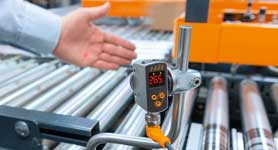 Distance sensor with fast time-of-flight measurement method
Distance sensor with fast time-of-flight measurement method
The advantages of Pulse Ranging Technology are complemented by the rotation of the 360 ° measurement module. This circles on a rigid axis and creates a uniform scan plane with virtually no angular deviation. Thus, the sensor achieves not only complete visibility, but also an angular resolution of up to 0,071 °. Its rotation frequency can reach up to 30 Hz, the measuring rate up to 54 kHz. It reliably detects even moving objects and very small objects. R2000 sensors are commonly used for collision protection, range monitoring in automated guided vehicles, or for detecting objects close to a surface. By combining several devices, a precise image of three-dimensional contours can be obtained.
Fourth dimension
Last year, the exhibit was expanded. In addition to the sensors, additional color cameras were mounted. Their images complement the distance data with the image information of brightness, color and contrast. This data exemplifies a "fourth dimension" that can be added to the 3D image and add value to accomplish different tasks. Instead of cameras, other devices such as temperature scanners could be added. They could be used to create a high-resolution temperature profile or track the temperature profile.
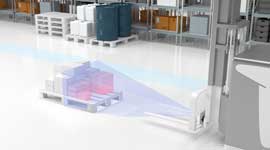 Vision Sensor solves many tasks in factory automation
Vision Sensor solves many tasks in factory automation
For the assignment of the measured values, however, the combination of the sensors involved, including precise 3D calibration, is a decisive prerequisite. Only in this way can the data be combined into a meaningful overall picture. The cloud of points is available for worldwide access in the Neo Neon Cloud of the Pepperl + Fuchs subsidiary Neoception. The data is provided in the standard format Point Cloud Data (PCD). Tools for processing PCD sentences are available on the Internet.
Immediate use on the smartphone
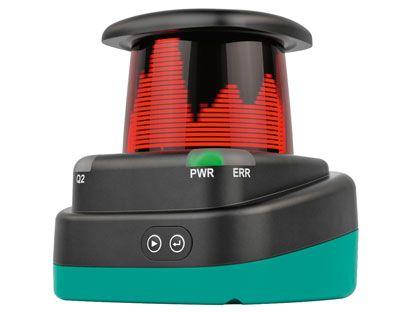 The trade fair exhibit demonstrates global data access and a first use: the visitor can immediately view his 3D image on his smartphone, the visualization takes over an augmented reality app, which can be called up from the app stores. For the access to the data a QR code is scanned, with the app one then scans the position marker of the exhibit. Those who get involved with this experiment could look at themselves from all sides on their own mobile device in 3D and in color. Depending on the trade fair appearance, there were also other possibilities, for example, to produce an 3D image in Plexiglas or to be printed as an 3D model on the title page of a personalized edition of the trade fair magazine. Of course, the same data can also be used for feeding into a production or logistics process.
The trade fair exhibit demonstrates global data access and a first use: the visitor can immediately view his 3D image on his smartphone, the visualization takes over an augmented reality app, which can be called up from the app stores. For the access to the data a QR code is scanned, with the app one then scans the position marker of the exhibit. Those who get involved with this experiment could look at themselves from all sides on their own mobile device in 3D and in color. Depending on the trade fair appearance, there were also other possibilities, for example, to produce an 3D image in Plexiglas or to be printed as an 3D model on the title page of a personalized edition of the trade fair magazine. Of course, the same data can also be used for feeding into a production or logistics process.
The overall constellation of the exhibit Connected Customization meets the three basic requirements for an industrial 4.0 architecture: First. The integration of the devices involved provides the horizontally networked basis, which depicts reality with great depth of field. Secondly. With the provision of standardized data on the Internet, vertical networking is realized. Third. This creates the prerequisites for a consistent engineering process without media disruption. The information depth of the data enables very fine-tuned solutions for highly complex applications, such as machine control, 3D printing or navigation. They also allow a differentiated, individualized production from batch size 1.
Connected Customization - Conclusion
The exhibit Connected Customization shows how high-quality sensors can be used to create a deep-focused, multi-dimensional image of reality in real time. The accumulated measurement data are available horizontally and vertically networked for consistent engineering and for automated production processes in a standard data format globally. They can be used without restriction for applications in the sense of Industry 4.0 and IoT.
You might also be interested in...

Industrial radar sensor with CAN interface
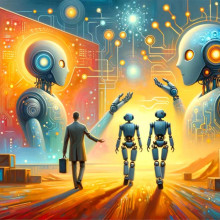
Artificial Intelligence | trends and developments
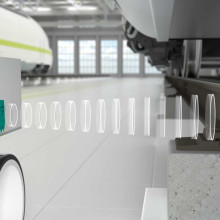
RFID and Barcodes | Industrial identification
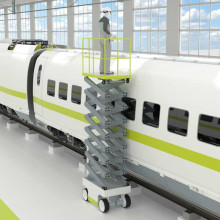
RFID reader and barcode scanner for identification
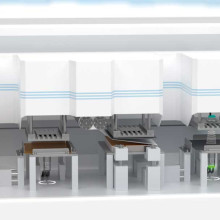
battery production | Facts and Technologies
